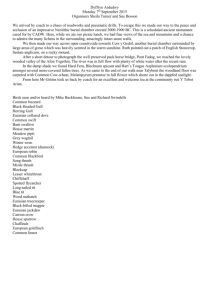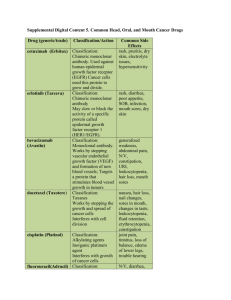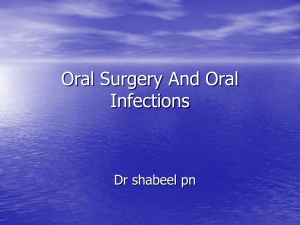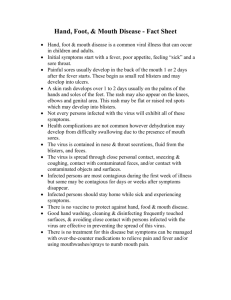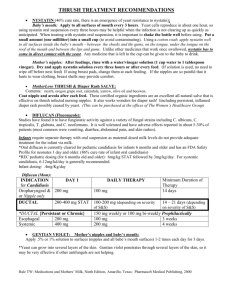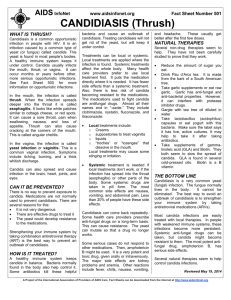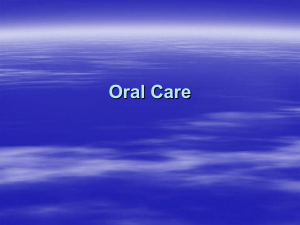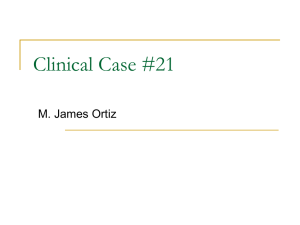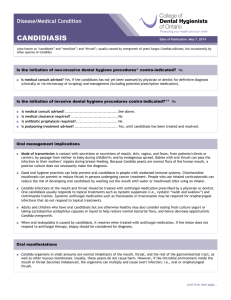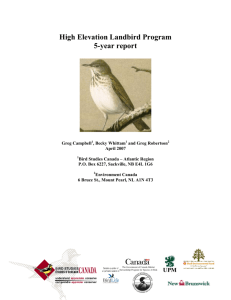Bidding farewell to thrush - Pharmaceutical Society of Australia
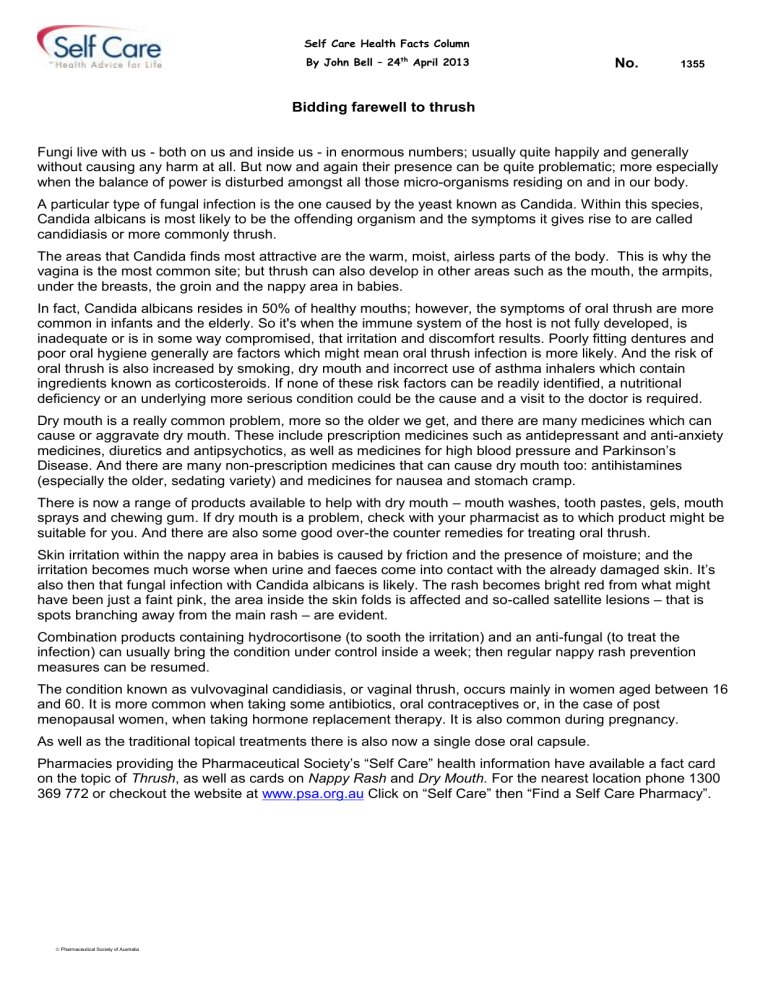
Self Care Health Facts Column
By John Bell – 24 th April 2013
No.
1355
Bidding farewell to thrush
Fungi live with us - both on us and inside us - in enormous numbers; usually quite happily and generally without causing any harm at all. But now and again their presence can be quite problematic; more especially when the balance of power is disturbed amongst all those micro-organisms residing on and in our body.
A particular type of fungal infection is the one caused by the yeast known as Candida. Within this species,
Candida albicans is most likely to be the offending organism and the symptoms it gives rise to are called candidiasis or more commonly thrush.
The areas that Candida finds most attractive are the warm, moist, airless parts of the body. This is why the vagina is the most common site; but thrush can also develop in other areas such as the mouth, the armpits, under the breasts, the groin and the nappy area in babies.
In fact, Candida albicans resides in 50% of healthy mouths; however, the symptoms of oral thrush are more common in infants and the elderly. So it's when the immune system of the host is not fully developed, is inadequate or is in some way compromised, that irritation and discomfort results. Poorly fitting dentures and poor oral hygiene generally are factors which might mean oral thrush infection is more likely. And the risk of oral thrush is also increased by smoking, dry mouth and incorrect use of asthma inhalers which contain ingredients known as corticosteroids. If none of these risk factors can be readily identified, a nutritional deficiency or an underlying more serious condition could be the cause and a visit to the doctor is required.
Dry mouth is a really common problem, more so the older we get, and there are many medicines which can cause or aggravate dry mouth. These include prescription medicines such as antidepressant and anti-anxiety medicines, diuretics and antipsychotics, as well as medicines for high blood pressure and Parkinson’s
Disease. And there are many non-prescription medicines that can cause dry mouth too: antihistamines
(especially the older, sedating variety) and medicines for nausea and stomach cramp.
There is now a range of products available to help with dry mouth – mouth washes, tooth pastes, gels, mouth sprays and chewing gum. If dry mouth is a problem, check with your pharmacist as to which product might be suitable for you. And there are also some good over-the counter remedies for treating oral thrush.
Skin irritation within the nappy area in babies is caused by friction and the presence of moisture; and the irritation becomes much worse when urine and faeces come into contact with the already damaged skin. It’s also then that fungal infection with Candida albicans is likely. The rash becomes bright red from what might have been just a faint pink, the area inside the skin folds is affected and so-called satellite lesions – that is spots branching away from the main rash – are evident.
Combination products containing hydrocortisone (to sooth the irritation) and an anti-fungal (to treat the infection) can usually bring the condition under control inside a week; then regular nappy rash prevention measures can be resumed.
The condition known as vulvovaginal candidiasis, or vaginal thrush, occurs mainly in women aged between 16 and 60. It is more common when taking some antibiotics, oral contraceptives or, in the case of post menopausal women, when taking hormone replacement therapy. It is also common during pregnancy.
As well as the traditional topical treatments there is also now a single dose oral capsule.
Pharmacies providing the Pharmaceutical Society’s “Self Care” health information have available a fact card on the topic of Thrush , as well as cards on Nappy Rash and Dry Mouth. For the nearest location phone 1300
369 772 or checkout the website at www.psa.org.au
Click on “Self Care” then “Find a Self Care Pharmacy”.
Pharmaceutical Society of Australia

